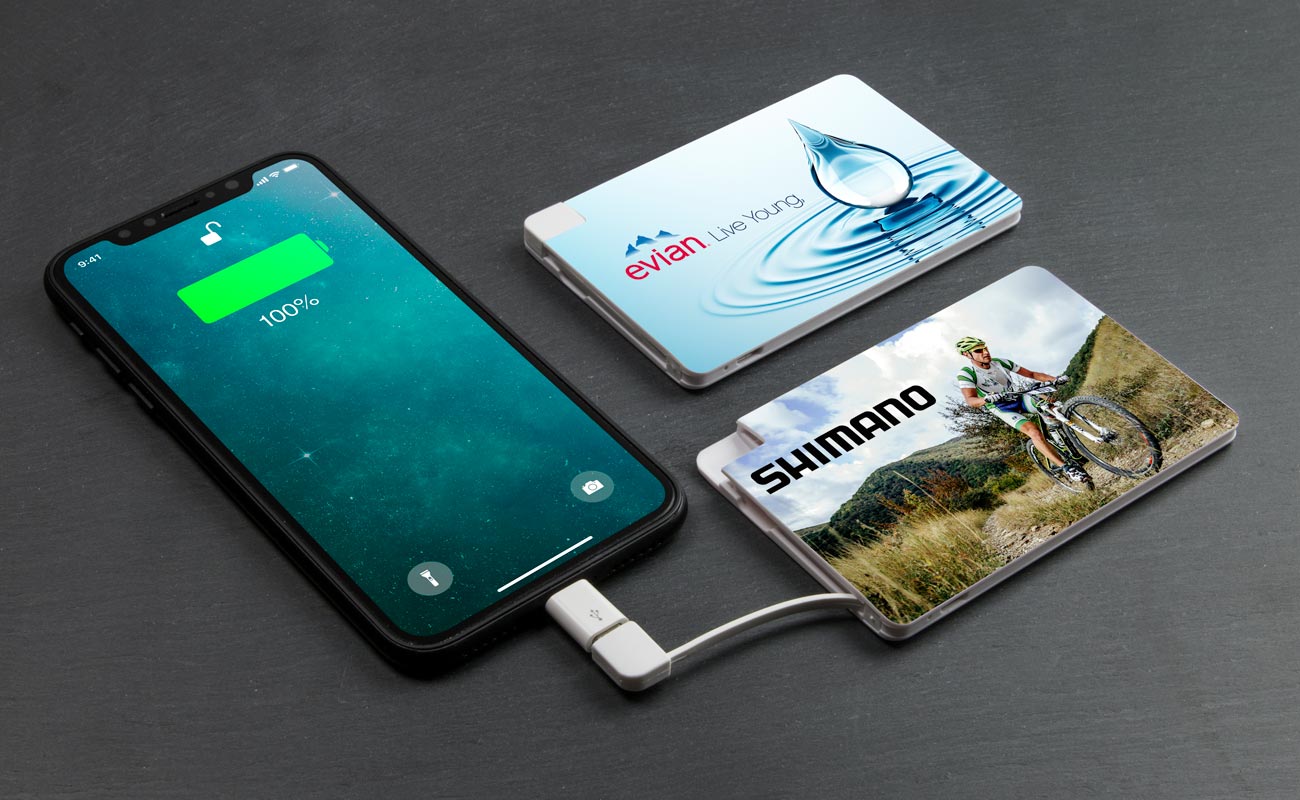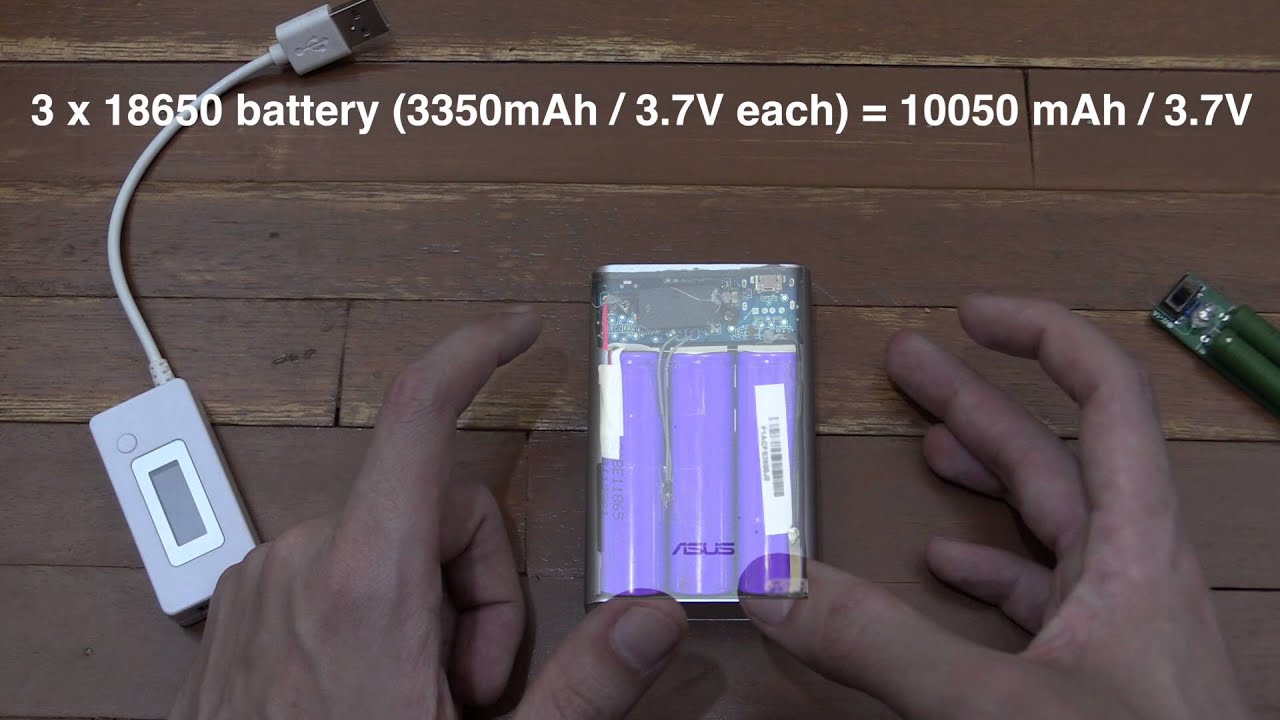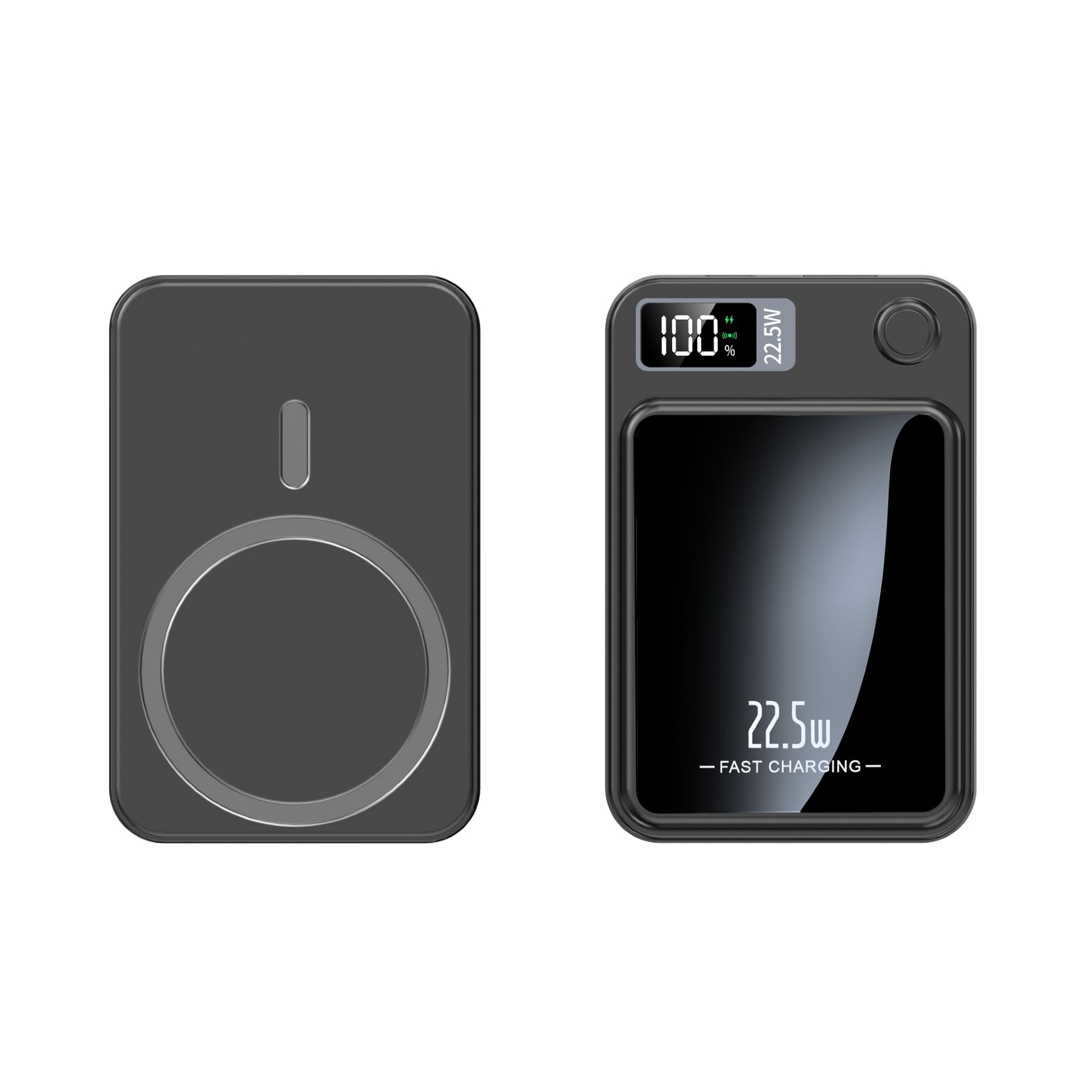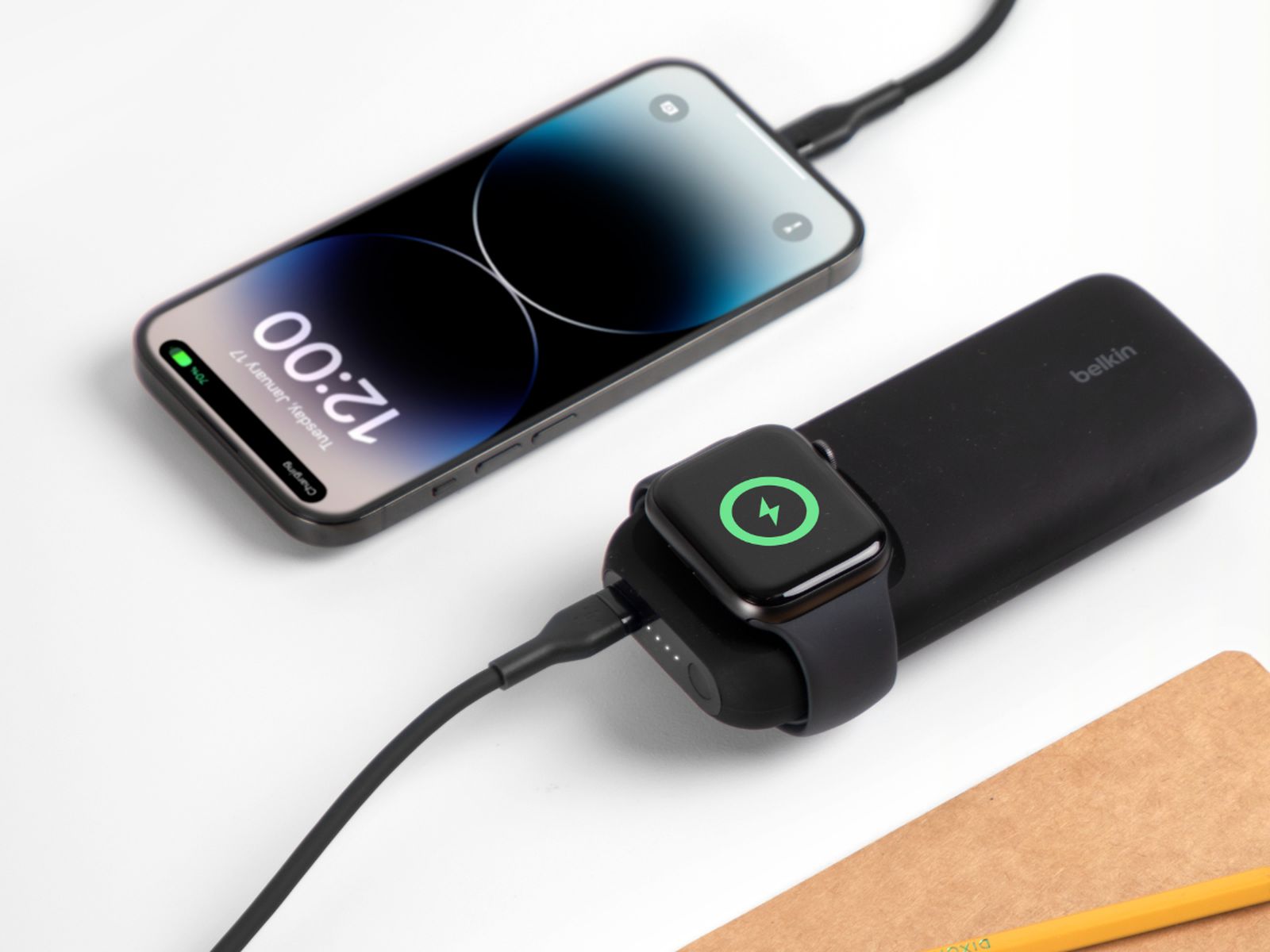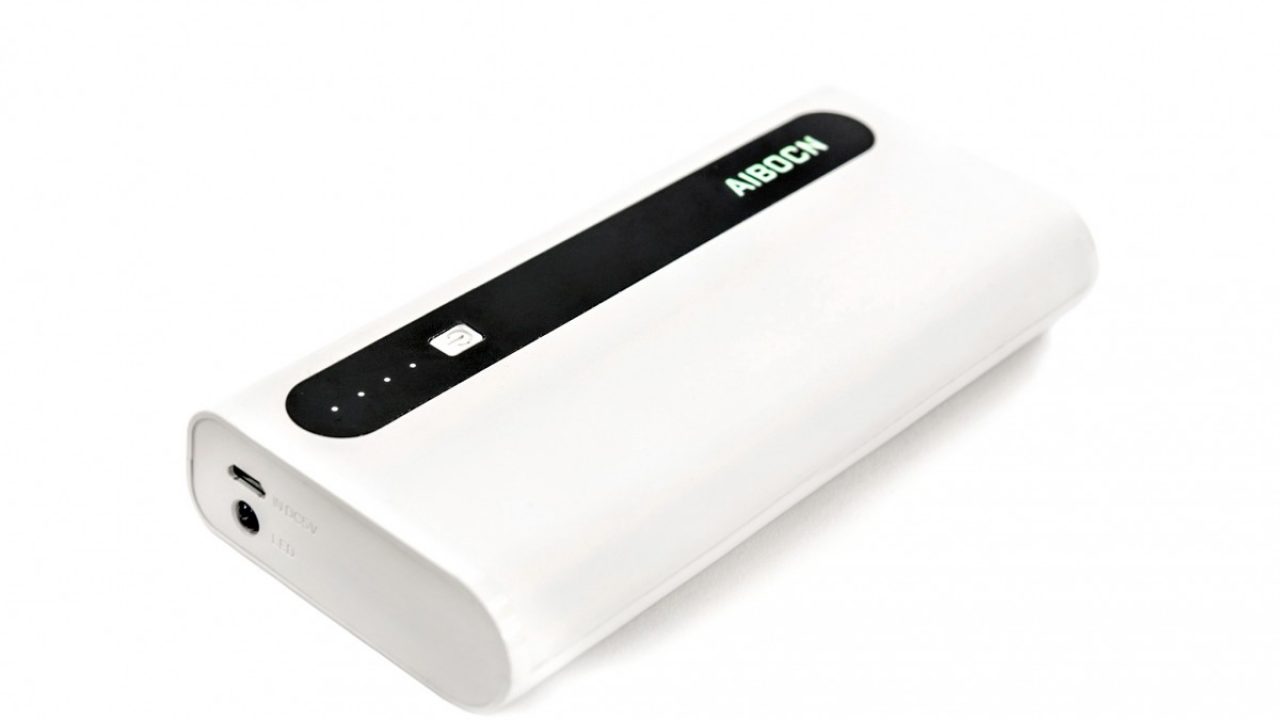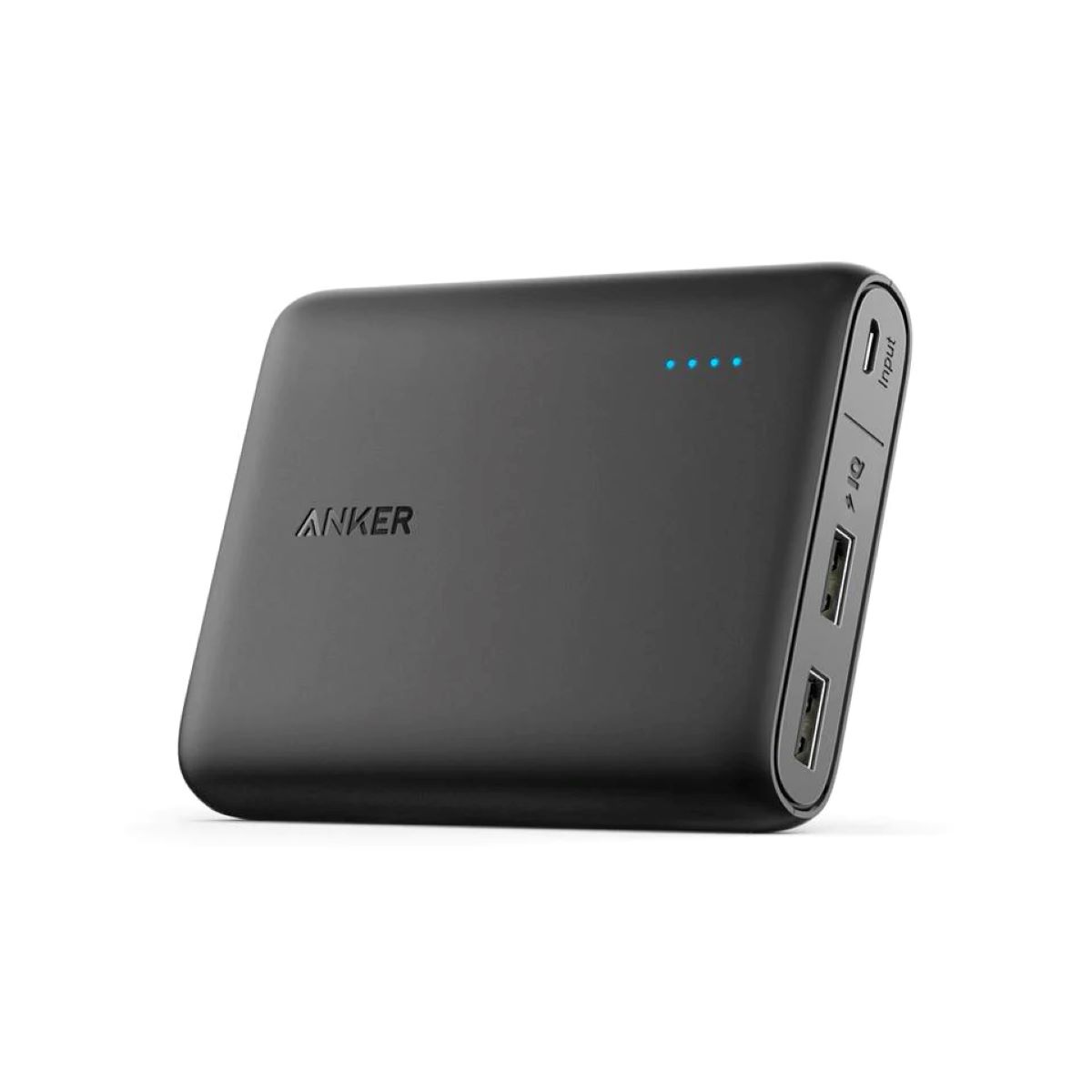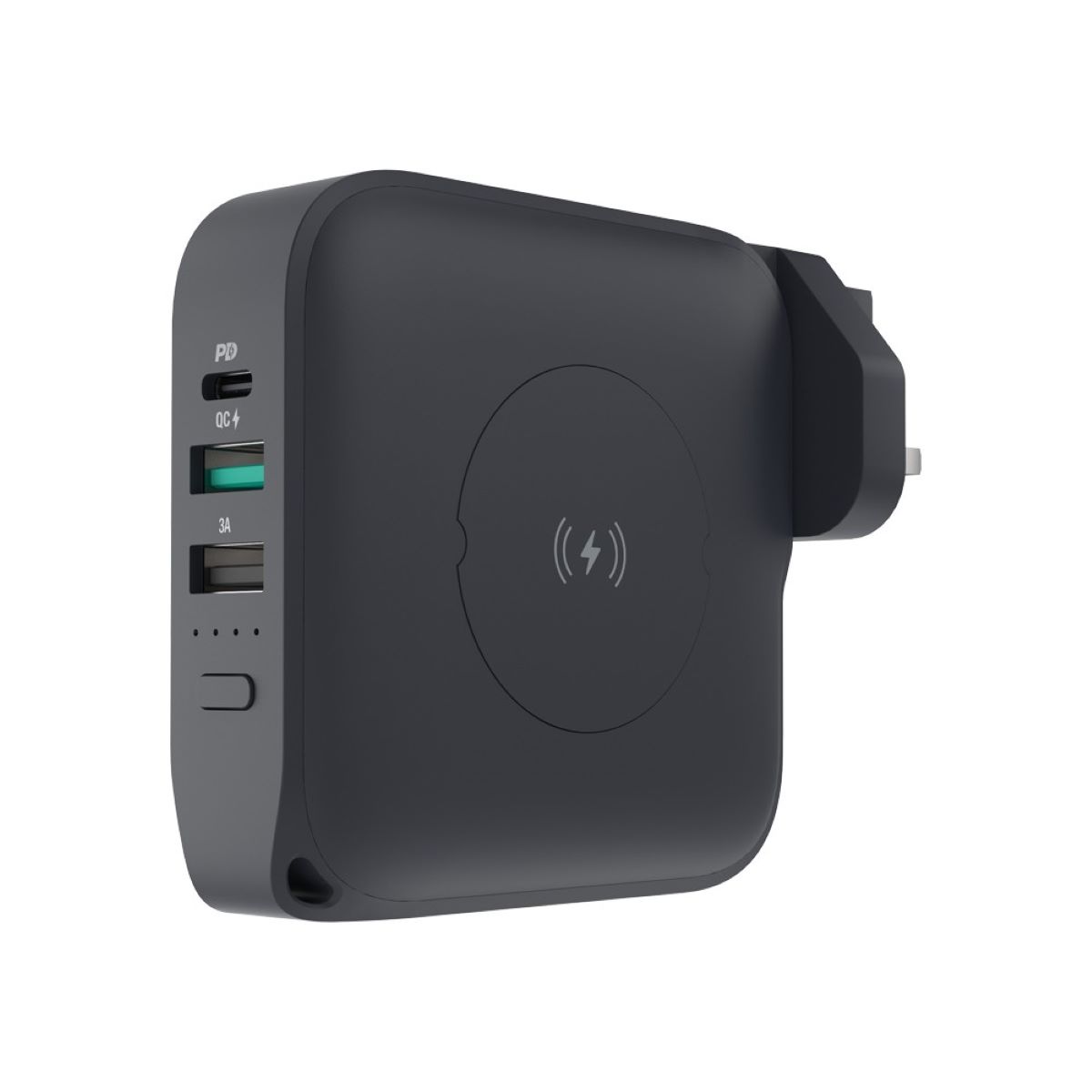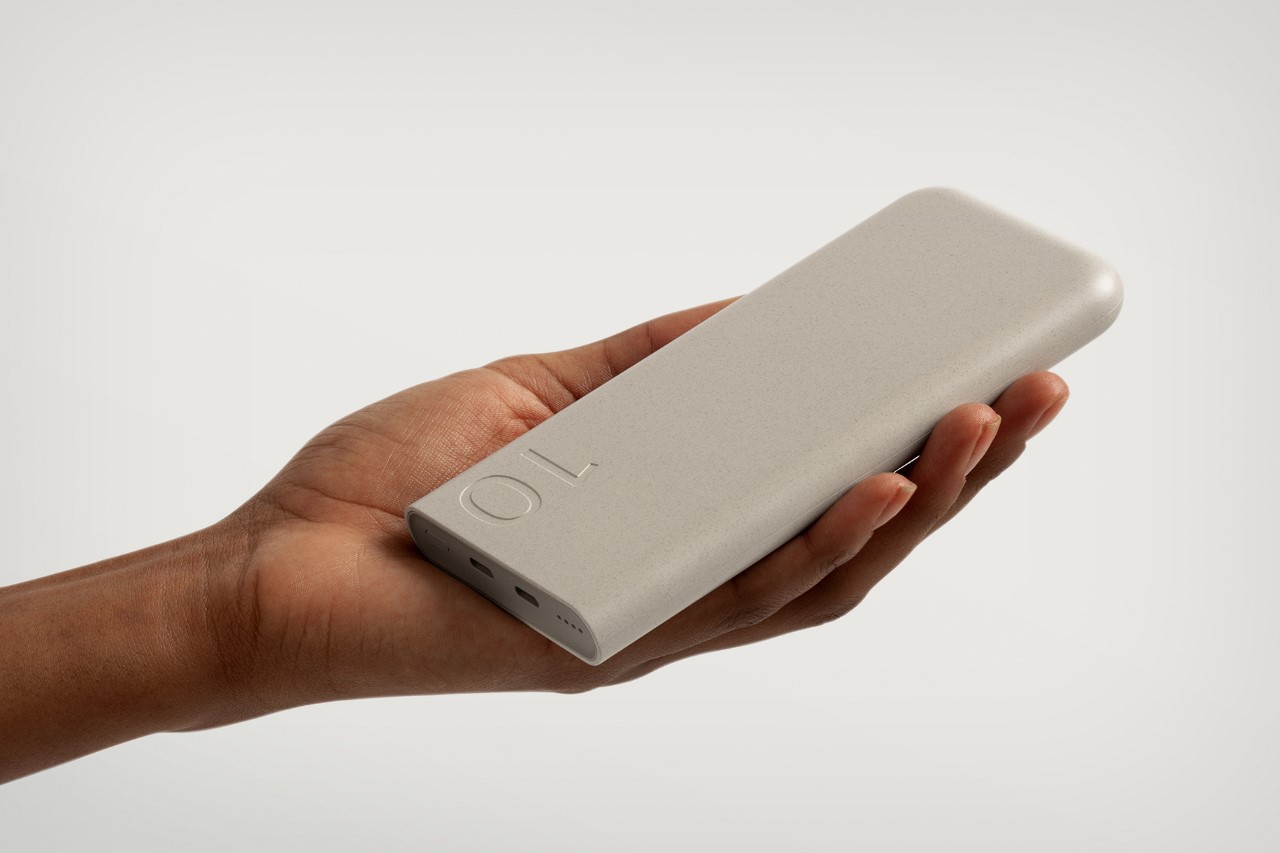Introduction
Power banks have become an essential accessory for our modern digital lifestyle. With the dependence on smartphones, tablets, and other portable devices, the need for a reliable power source on the go is more crucial than ever. Whether you are traveling, attending meetings, or simply spending a day out, having a power bank can ensure that you never run out of battery life.
But have you ever wondered how long a power bank can actually hold a charge? It’s a common question among users who want to make the most out of their portable power source without compromising on the convenience it offers. In this article, we will explore the factors that affect a power bank’s holding capacity and provide valuable insights on how long you can expect your power bank to keep your devices powered up.
Before we dive into the details, let’s start with a brief explanation of what a power bank actually is. In simple terms, a power bank is a portable charger that stores electrical energy in its built-in battery. It enables you to charge your devices, such as smartphones, tablets, or even laptops, on the go. The power bank acts as an external power source that you can carry with you anytime, anywhere, providing an additional battery backup when you need it the most.
What is a power bank?
A power bank, also known as a portable charger or external battery pack, is a portable device that allows you to charge your electronic devices when you are on the go. It is essentially a portable power supply that stores electrical energy in its built-in battery for later use. The power bank serves as an external power source that can be connected to various devices, such as smartphones, tablets, smartwatches, or even laptops, via USB or other charging cables.
Power banks come in different sizes, capacities, and designs to cater to various charging needs. They typically consist of a lithium-ion or lithium-polymer battery, circuitry for controlling the flow of electricity, and one or more USB ports for connecting devices. The higher the capacity of the power bank, the more charge it can store, allowing you to charge your devices multiple times before needing to recharge the power bank itself.
One of the key advantages of a power bank is its portability. With a power bank in your bag or pocket, you can stay connected and keep your devices powered up wherever you go. Whether you are traveling, camping, attending conferences, or simply spending a day out, a power bank ensures that you have a reliable backup power source in case you cannot access a wall socket or charging station.
Besides providing convenience, power banks also offer a reliable solution for emergencies. Imagine being in a situation where your smartphone battery dies, and you need to make an important call or access directions. With a power bank, you can quickly revive your device and stay connected when it matters most.
Overall, a power bank is a must-have accessory for anyone who relies heavily on their electronic devices. It provides a portable and convenient solution for charging on the go, ensuring that you never have to deal with a dead battery again. Whether you are a frequent traveler, an outdoor enthusiast, or simply someone who wants to stay connected at all times, investing in a reliable power bank can make a significant difference in your digital lifestyle.
Factors that affect power bank’s holding capacity
Several factors can influence the holding capacity of a power bank, determining how long it can efficiently provide power to your devices. Understanding these factors can help you make an informed decision when choosing a power bank and optimize its performance. Here are the main factors that affect a power bank’s holding capacity:
- Battery capacity: The battery capacity is the amount of electrical charge that a power bank can store. It is usually measured in milliampere-hours (mAh). The higher the battery capacity, the more charge the power bank can store, allowing it to provide power for a more extended period. It is essential to choose a power bank with a capacity that matches your devices’ requirements to ensure sufficient charging.
- Output current of the power bank: The output current refers to the amount of electrical current that the power bank can deliver to the connected device. It is measured in amperes (A) or milliamperes (mA). Higher output currents result in faster charging times. However, keep in mind that some devices have a maximum input current limit, so it is crucial to match the power bank’s output current with your device’s requirements for optimum charging speed.
- Charging capacity of the device: Different devices have different battery capacities and charging requirements. Some devices can charge at faster rates, while others may have lower input currents. The charging capacity of the device being charged affects the overall efficiency and holding capacity of the power bank.
- Power bank usage habits: How you use your power bank also affects its holding capacity. Factors such as the frequency of use, the number of devices charged simultaneously, and the charging habits (e.g., charging in short bursts or continuous charging) can impact the overall performance and efficiency of the power bank.
It is important to note that power banks are not 100% efficient. There is always some loss of energy during the charging and discharging process, resulting in a reduction in the actual usable capacity. This loss can vary depending on the quality and design of the power bank.
By considering these factors and choosing a power bank that aligns with your device’s requirements and usage habits, you can maximize its holding capacity and ensure a reliable power source that meets your charging needs.
Battery capacity
The battery capacity is one of the most critical factors that determine the holding capacity of a power bank. It refers to the amount of electrical charge that the power bank’s battery can store, and it is typically measured in milliampere-hours (mAh).
The higher the battery capacity of a power bank, the more charge it can store, allowing it to provide power for a more extended period. For example, a power bank with a capacity of 10,000mAh can theoretically charge a smartphone with a 2,500mAh battery approximately four times before needing to be recharged itself. However, it’s important to note that the actual charging capacity may vary due to energy losses during the charging and discharging process.
When choosing a power bank based on battery capacity, it’s essential to consider your devices’ battery capacity and charging requirements. If you have multiple devices or devices with larger batteries, you may opt for a power bank with a higher capacity to ensure that it can provide sufficient charge to all your devices.
It’s worth noting that a higher battery capacity often translates to a larger and heavier power bank. So, you should also consider portability and convenience when selecting a power bank. If you frequently travel or need a power bank for daily use, you may want to strike a balance between battery capacity and size/weight to ensure it fits comfortably in your bag or pocket.
Furthermore, it’s important to choose a power bank with a reputable and reliable battery. Opt for power banks that use high-quality lithium-ion or lithium-polymer batteries, as these tend to offer better performance, safety, and longevity.
In summary, the battery capacity of a power bank plays a crucial role in its holding capacity. A higher capacity allows the power bank to store more charge, extending its usability. Consider your devices’ battery capacity, your charging needs, and the portability of the power bank when selecting one with an appropriate battery capacity.
Output current of the power bank
The output current of a power bank refers to the amount of electrical current that it can deliver to the connected device. It is typically measured in amperes (A) or milliamperes (mA). The output current plays a crucial role in determining the charging speed and compatibility of the power bank with various devices.
Power banks usually have multiple output ports, each with a specific output current rating. The output current rating should match or exceed the device’s input current requirement for optimal charging speed. For example, if a smartphone requires a 2A input current, using a power bank with an output current of 1A may result in slower charging times.
It’s important to note that the output current may vary across different ports of a power bank. Some power banks offer dedicated ports with higher output currents designed specifically for fast charging. These ports may support technologies such as Quick Charge or Power Delivery, allowing compatible devices to charge at even faster rates.
When selecting a power bank based on output current, consider the devices you plan to charge. If you have devices that support fast charging technologies, make sure to choose a power bank with compatible ports and higher output currents to take full advantage of the fast charging capabilities.
It’s also worth mentioning that some devices have a maximum input current limit, which can restrict the charging speed even if the power bank has a higher output current. In such cases, it’s recommended to check the device’s specifications or consult the manufacturer to determine its maximum input current capability.
In summary, the output current of a power bank is an important factor to consider when determining its charging speed and compatibility with your devices. Matching the power bank’s output current with the devices’ input current requirements ensures efficient charging and minimizes charging time.
Charging capacity of the device
The charging capacity of the device being charged is an essential factor that can affect the holding capacity of a power bank. Different devices have varying battery capacities and charging requirements, which can influence the overall efficiency and charging duration.
Devices with larger battery capacities naturally require more power to charge fully. For example, a smartphone with a 3000mAh battery will require more charging capacity compared to a smartwatch with a 500mAh battery. When choosing a power bank, it’s important to consider the battery capacity of the device you intend to charge to ensure that the power bank can provide sufficient charge.
Furthermore, some devices have different charging capabilities and input current requirements. While some devices can handle higher input currents, others may have lower limits. It is crucial to match the power bank’s output current with the device’s maximum input current to ensure efficient charging. If the power bank’s output current exceeds the device’s limit, the device may only charge at its maximum input current, potentially leading to slower charging speeds.
It’s also worth noting that some devices have specific charging protocols or technologies that allow them to charge at faster rates when connected to compatible power sources. For example, devices that support Qualcomm Quick Charge or USB Power Delivery may take advantage of power banks that also support these fast charging technologies. When using a power bank with such capabilities, you may experience quicker charging times for compatible devices.
Considering the charging capacity of your device is essential to optimize the usage of your power bank. By selecting a power bank with the appropriate output current and compatibility with your device’s charging technology, you can ensure efficient and speedy charging.
Power bank usage habits
How you use your power bank can significantly impact its holding capacity and overall performance. Your usage habits, including the frequency of use, the number of devices charged simultaneously, and the charging habits, play a role in ensuring optimal power bank efficiency.
The frequency of power bank usage determines how often you recharge it. If you frequently rely on your power bank to charge your devices, you may need to recharge it more frequently as well. It’s important to monitor the power bank’s battery level and recharge it before it runs out of power completely. Regularly maintaining its charge level can help prolong the power bank’s overall lifespan and ensure it is ready for use when needed.
The number of devices charged simultaneously can also affect the holding capacity of the power bank. Charging multiple devices simultaneously will drain the power bank’s battery faster and reduce its available capacity for each device. To optimize the power bank’s holding capacity, consider charging devices one at a time or investing in a power bank with multiple output ports and higher capacity.
Charging habits can also impact the power bank’s holding capacity. Charging devices in short bursts or intermittently may reduce the overall efficiency and capacity utilization of the power bank. It’s generally advisable to charge devices for longer durations continuously, allowing the power bank to deliver a steady flow of power and maximize efficiency.
In addition to these usage habits, the environment in which you use the power bank can also affect its performance. Exposing the power bank to extreme temperatures, whether too hot or too cold, can adversely affect its battery life and performance. It’s important to store and use the power bank within the recommended temperature range provided by the manufacturer.
Lastly, proper maintenance of the power bank is crucial for maximizing its holding capacity. Keeping the power bank clean, protecting it from physical damage, and avoiding exposure to liquids or moisture can help extend its lifespan and ensure consistent performance over time.
By developing good usage habits, such as recharging the power bank regularly, charging devices one at a time, employing continuous charging, and maintaining the power bank’s cleanliness and safety, you can optimize its holding capacity and ensure it remains a reliable power source for your devices.
How long can a fully charged power bank hold its charge?
The holding capacity of a fully charged power bank can vary depending on several factors, including its battery capacity, the devices it charges, and the efficiency of its charging and discharging process. While it is challenging to provide an exact duration, we can discuss some general guidelines to help you understand how long a power bank can hold its charge.
The battery capacity of a power bank plays a significant role in determining its holding capacity. A power bank with a higher capacity can store more charge and, therefore, last longer before needing to be recharged. For example, a 10,000mAh power bank can potentially charge a device with a 2,500mAh battery around four times before it needs to be recharged itself.
However, it’s important to note that power banks are not 100% efficient, and there is always some energy loss during the charging and discharging process. This loss can occur due to factors such as heat generation, circuit resistance, and conversion inefficiencies. As a result, the actual usable capacity of a power bank may be slightly lower than its stated capacity.
The devices being charged also impact the holding capacity of the power bank. Devices with larger battery capacities or higher power requirements will drain the power bank’s charge faster, reducing its overall holding capacity. Charging multiple devices simultaneously can also decrease the power bank’s holding capacity, as it needs to distribute its charge among multiple devices.
Moreover, different power banks have different charging and discharging efficiencies. Higher-quality power banks may have better internal circuitry, resulting in improved efficiency and holding capacity. It’s advisable to choose a reputable power bank from a reliable manufacturer to ensure better performance and long-lasting power.
Other factors, such as the age of the power bank and its usage habits, can also affect its holding capacity. Over time, the battery of a power bank may degrade, leading to a decrease in its overall holding capacity. Regular usage, frequent recharges, and proper maintenance can help maintain the power bank’s efficiency and extend its lifespan.
Ultimately, the actual duration a fully charged power bank can hold its charge will depend on the specific power bank model, its capacity, the devices being charged, and various external factors. It is recommended to refer to the manufacturer’s specifications and customer reviews for a better understanding of the holding capacity of a particular power bank.
Tips to enhance power bank’s holding capacity
If you want to maximize the holding capacity of your power bank and ensure it lasts as long as possible, here are some helpful tips to consider:
- Choose the right capacity: Select a power bank with a capacity that matches your devices’ requirements. A higher capacity power bank will generally offer a longer holding capacity.
- Invest in a quality power bank: Opt for a reputable power bank from a reliable manufacturer. Higher-quality power banks tend to have better efficiency and longer holding capacity.
- Charge the power bank fully: Before using the power bank for the first time or when recharging, make sure to charge it fully. This ensures that it is operating at its maximum capacity.
- Use the right cables: Use high-quality charging cables and connectors that are compatible with your devices. Inferior cables can result in power loss and reduce the efficiency of the charging process, affecting the power bank’s holding capacity.
- Avoid charging devices in extreme temperatures: Expose the power bank and the devices being charged to excessive heat or cold temperatures can reduce the holding capacity of the power bank. Store and use the power bank within the recommended temperature range provided by the manufacturer.
- Charge devices one at a time: Whenever possible, charge devices individually instead of charging multiple devices simultaneously. This allows the power bank to focus its charge on a single device, maximizing its holding capacity.
- Use continuous charging: Charge devices for extended periods instead of charging in short bursts. Continuous charging helps maintain a stable flow of power and improves the overall efficiency of the power bank.
- Keep the power bank clean and well-maintained: Regularly clean the power bank’s ports, remove any dust or debris, and ensure it is free from physical damage. Proper maintenance can help maximize the power bank’s holding capacity and extend its lifespan.
- Recharge the power bank promptly: Once the power bank’s battery level starts to decrease, recharge it promptly. Avoid completely draining the power bank as it can potentially harm the battery and reduce its overall holding capacity.
By following these tips, you can enhance the holding capacity of your power bank and ensure that it stays reliable and efficient for extended periods, providing you with the necessary power when you need it most.
Conclusion
Power banks have become an indispensable companion for our digital lives, offering a convenient and portable solution to keep our devices charged on the go. The holding capacity of a power bank, or how long it can provide power before needing to be recharged, depends on various factors, including its battery capacity, output current, charging capacity of the devices, power bank usage habits, and overall efficiency.
Understanding these factors can help you choose a power bank that meets your charging needs and optimize its holding capacity. Consider investing in a power bank with a suitable battery capacity and output current to match your devices’ requirements. Charging your devices individually, using continuous charging, and following proper usage habits can also enhance the holding capacity of your power bank.
It’s important to note that while power banks offer a reliable power source, the actual holding capacity may vary due to factors such as energy losses during charging and discharging, device charging capacity, and environmental conditions. By selecting a reputable power bank, using high-quality cables and connectors, and keeping the power bank well-maintained, you can maximize its efficiency and prolong its lifespan.
In conclusion, power banks have revolutionized the way we stay connected and powered on the go. By considering the factors that affect their holding capacity and following the tips mentioned above, you can ensure a reliable and long-lasting power supply that keeps your devices charged, no matter where life takes you.







